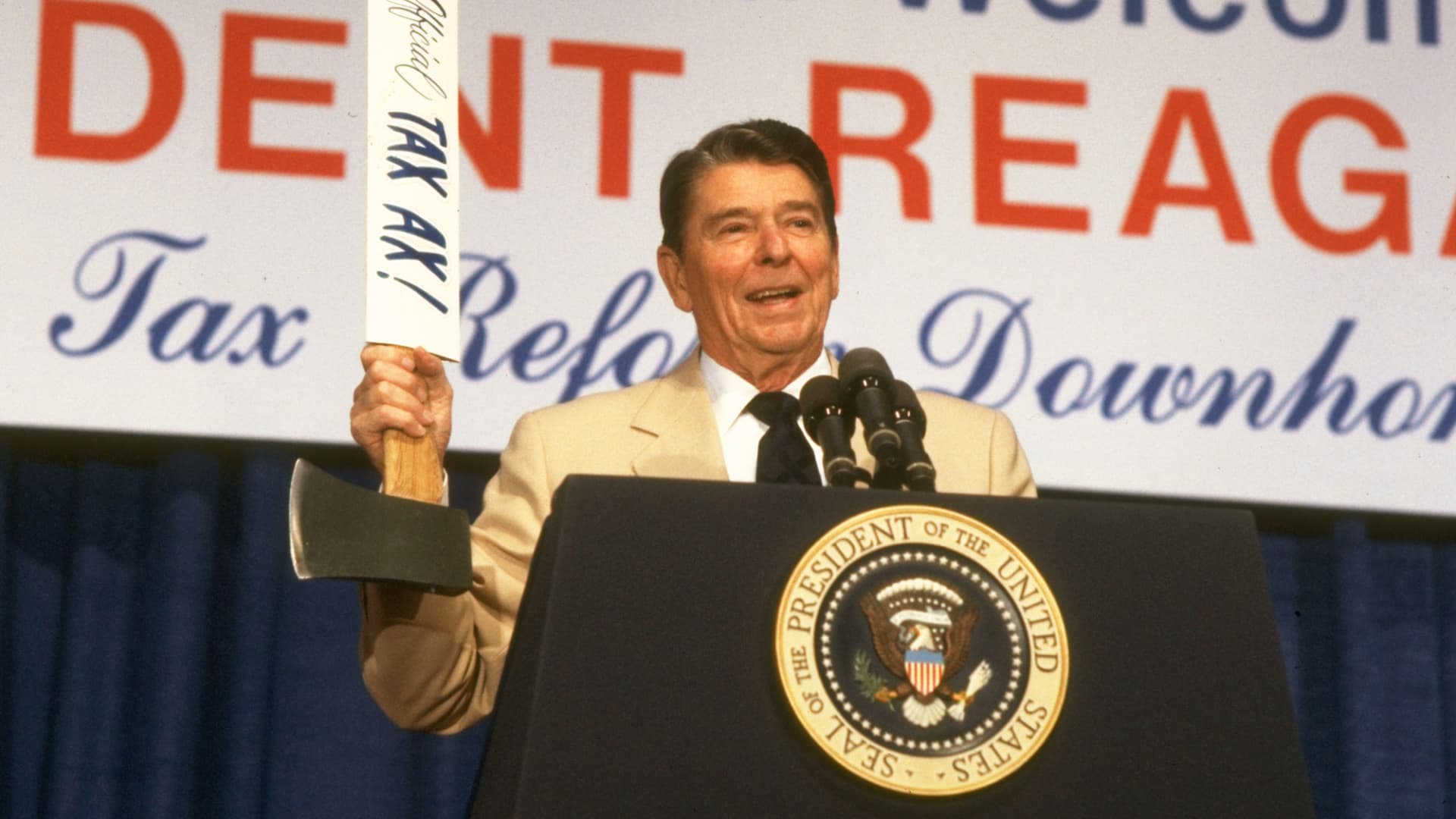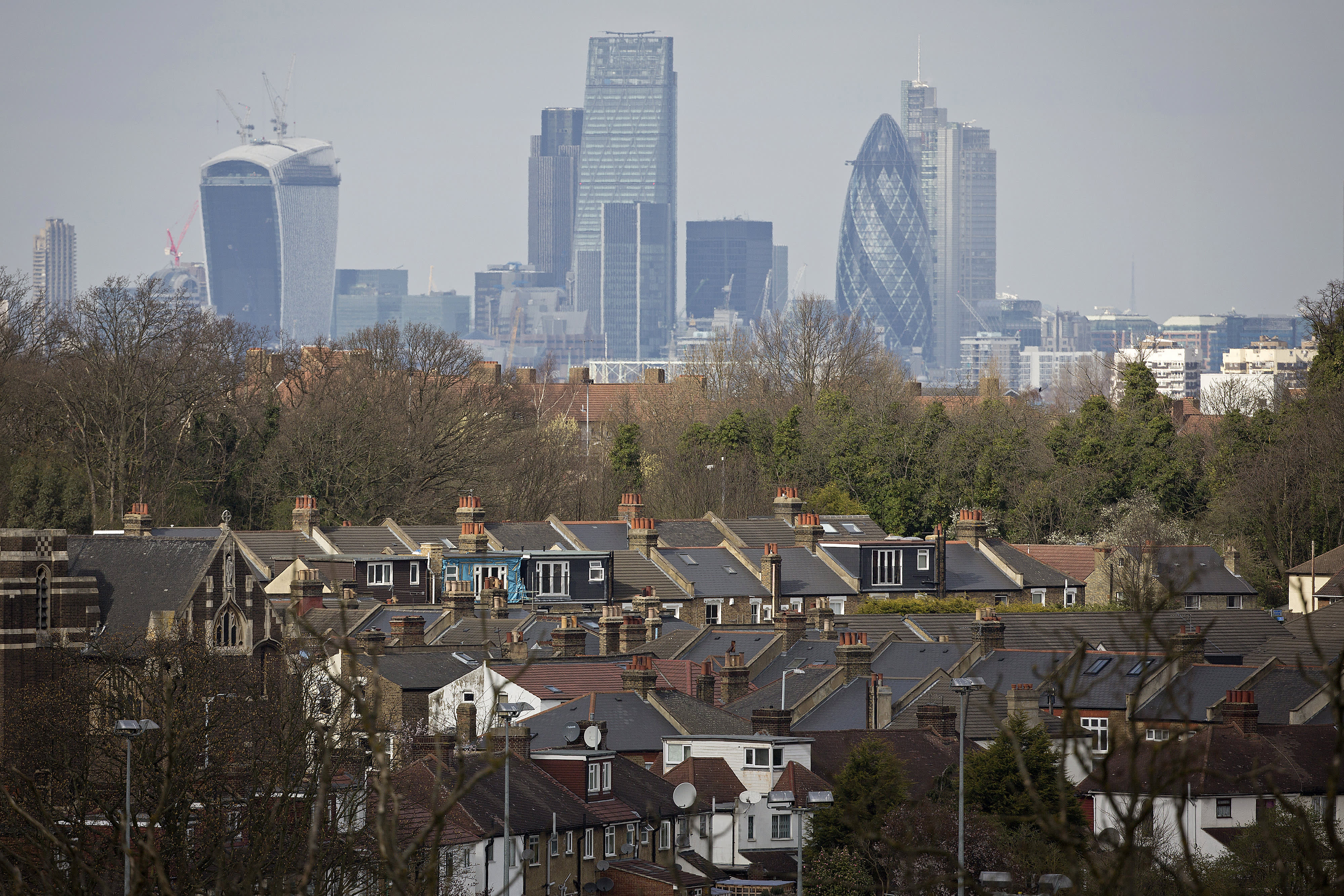Britain's market-rocking tax cuts have been compared to 'Reaganomics.' But there are differences
Comparisons between the ideology of Liz Truss, who became U.K. prime minister earlier this month, and Ronald Reagan have come thick and fast.

British Prime Minister Liz Truss, who took office in September, has announced a sweeping program of economic reforms.
David Dee Delgado | Reuters
Comparisons between the ideology of Liz Truss, who became U.K. prime minister earlier this month, and Ronald Reagan have come thick and fast.
CNBC takes a look at the similarities — and key differences — between Truss and the U.S. president sworn in over 40 years before her.
Sweeping tax cuts
Truss is a staunch advocate for a number of core themes of Reaganomics, and has co-authored a book, along with other Conservative MPs, bemoaning weak British productivity and arguing for reduced regulation, public spending and lower taxes.
Indeed, on the campaign trail this summer, Truss made clear that tax cuts would be the platform she ran on. She has, in the past, tweeted about the Laffer Curve — the 1974 bell-curve analysis that has been used to argue that cutting taxes can lead to greater tax revenues.
As Britain panicked over an upcoming massive rise in energy bills, Truss insisted that lowering taxes would be a key way to cushion households and businesses from the blow. She has also repeatedly stressed that her priority as leader would be boosting U.K. economic growth, which has been sluggish for decades.
A time of interest rate hikes
There are certainly parallels between Reagan's time and now. When the 40th president was sworn in on January 20, 1981, U.S. year-on-year inflation was 11.83%. In the U.K. today, it is a slightly lower, but still at an eye-watering 9.9%. An energy crisis was a key driver in both instances.
Rocketing inflation also meant the leaders entered office at a time when their countries' central banks had begun rising interest rates, though on very different scales.
The Bank of England has so far pushed up its key rate from 0.1% to 2.25% over the course of seven meetings since December 2021, and it is expected to go higher. The Federal Reserve's Paul Volcker began a famous rate hike cycle in 1979 that by Reagan's first day had taken the federal funds rate to a record high of 19-20%.
President Ronald Reagan holding up an ax emblazoned with "The Official TAX AX!" at a speech in 1986.
Diana Walker | Time Life Pictures | Getty Images
Speed
Both Truss and Reagan quickly moved to enact policies driven by their ideology. Reagan had passed the Economic Recovery Tax Act by August 1981, slashing taxes on federal income — taking the top rate from 70 to 50% — as well cutting capital gains, inheritance and corporation tax.
Meanwhile, within a month of coming to power, Truss had announced the biggest program of tax cuts the U.K. had seen in 50 years. This included reductions in income tax — including for the U.K.'s highest earners — and the scrapping of a planned rise in corporation tax from 19p to 25p.
In a 1981 address to the nation, Reagan declared: "With our budget cuts, we've presented a complete program of reduction in tax rates."
"Our purpose was to provide incentive for the individual, incentives for business to encourage production and hiring of the unemployed, and to free up money for investment," he added.
Truss said last week that her policies had "made sure that people and businesses will be paying lower taxes ... which will mean that we can get on with doing the things that will help people, whether it's getting to work or setting up their own business, and growing the economy."
Market reaction
The aftermath of Reagan's tax bill saw a drop in stock and bond markets and concerns over government debt and inflation, but the reaction to the U.K. government's economic plan has been extreme.
Truss and her Finance Minister Kwasi Kwarteng's so-called mini-budget has been slammed by various think tanks, billionaire hedge fund managers, and politicians within their own Conservative Party. Polls show the opposition Labour party rising to a level of popularity not seen since the 1990s. In a rare statement, even the International Monetary Fund said it was not the right time for such a fiscal pivot.
In the days following their announcement, the pound dropped to an all-time low, mortgage deals were pulled from the market and U.K. government bonds began to sell-off at a historic rate, causing the Bank of England to begin a temporary purchase program to calm volatility.
A key driver of the market reaction is the fact that the central bank is tightening monetary policy in an attempt to cool inflation, while, at the same time, the government announces new stimulus which could prove inflationary. Analysts also said there had been a panic over the scale of the unfunded fiscal giveaway.
Britain's Prime Minister Liz Truss and Britain's Chancellor of the Exchequer Kwasi Kwarteng.
Dylan Martinez | Afp | Getty Images
While federal debt did eventually balloon under Reagan, from $995 billion to $2.9 trillion, his program did reduce government spending on several domestic programs, including welfare.
Truss's allies have suggested this may be to come too, and the government is expected to expand on its public spending cut plans in coming weeks. But front of mind in the near-term is the huge package of support the U.K. government has pledged for households and businesses in the face of soaring energy bills, expected to cost more than £100 billion over two years. Markets have yet to be convinced of the government's fiscal credibility, according to the Institute for Fiscal Studies, a research group.
Currency strength, political support
A notable point of difference between the U.K. now and 1980s U.S. is currency strength. Aside from the sharp drop in sterling seen after Truss's announcement, the British pound has been declining against the U.S. dollar all year, and also fallen in value against the euro.
Truss' critics say this makes her policies even more untenable, since further pound weakness will drive up the price of imports.
Reagan also managed to woo the more conservative wing of the Democrat party and passed his 1981 bill in the Senate 89–11. Truss's party, by contrast, remains bitterly divided and her plan has faced vocal criticism from high-profile Conservative politicians.
Reversals?
Paul Winfree, research scholar at Queen's University Belfast, noted that while the first Reagan tax cut significantly reduced marginal rates (or income tax, as it's known in the U.K.), many of the other cuts were almost immediately scaled back when national revenues fell.
"Monetary policy was also critical to the story," Winfree said. "The Federal Reserve significantly tightened the growth in money supply to curb inflation and a recession followed." This also threatened the first Reagan tax cuts.
As of Monday, Truss had already U-turned on a key part of her plan, scrapping plans to reduce tax for the highest earners. That was despite her insisting Sunday she was "absolutely committed" to the cut.
In the U.S., the Fed began easing monetary policy in mid-1982 which "provided the foundation for the economic expansion that followed," according to Winfree.
"It was within this expansion that the Reagan Administration could afford to both increase defense spending and further reduce marginal tax rates, although capital gains taxes were increased back to 28 percent in 1986," he added.
U.S. President Ronald Reagan addresses the nation
David Hume Kennerly | Getty Images
Reaganomics' legacy remains a matter of sharply divided opinion. GDP growth and business expansion were delivered, but so were higher federal debt, increased income inequality and a higher trade deficit.
David Blanchflower, economics professor at Dartmouth University and former member of the Bank of England's Monetary Policy Committee, said he was skeptical about analogies between Truss and Reagan.
"What we are seeing here is total chaos in the markets," he told CNBC by email last week. "At least Reagan had a mandate from the electorate."
Truss was elected on a vote open to only around 170,000 Conservative party members.
Her legacy is, of course, still being moulded as debate rages over what benefit — if any — her sweeping program of tax cuts and investment incentives will have for the U.K.

 Troov
Troov 































